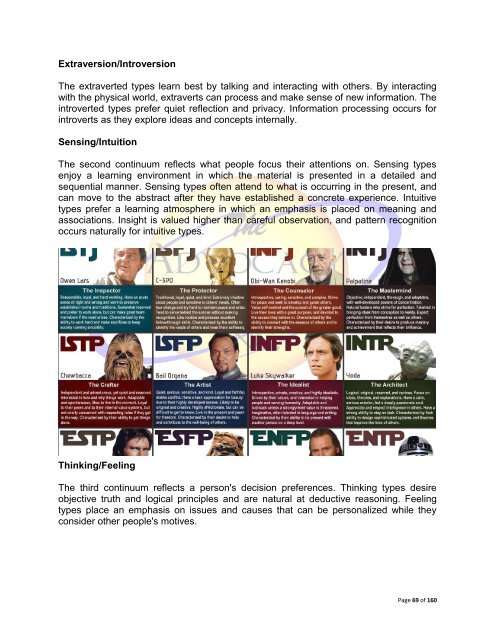The Gift of Introversion
The Gift of Introversion
The Gift of Introversion
You also want an ePaper? Increase the reach of your titles
YUMPU automatically turns print PDFs into web optimized ePapers that Google loves.
Extraversion/<strong>Introversion</strong><br />
<strong>The</strong> extraverted types learn best by talking and interacting with others. By interacting<br />
with the physical world, extraverts can process and make sense <strong>of</strong> new information. <strong>The</strong><br />
introverted types prefer quiet reflection and privacy. Information processing occurs for<br />
introverts as they explore ideas and concepts internally.<br />
Sensing/Intuition<br />
<strong>The</strong> second continuum reflects what people focus their attentions on. Sensing types<br />
enjoy a learning environment in which the material is presented in a detailed and<br />
sequential manner. Sensing types <strong>of</strong>ten attend to what is occurring in the present, and<br />
can move to the abstract after they have established a concrete experience. Intuitive<br />
types prefer a learning atmosphere in which an emphasis is placed on meaning and<br />
associations. Insight is valued higher than careful observation, and pattern recognition<br />
occurs naturally for intuitive types.<br />
Thinking/Feeling<br />
<strong>The</strong> third continuum reflects a person's decision preferences. Thinking types desire<br />
objective truth and logical principles and are natural at deductive reasoning. Feeling<br />
types place an emphasis on issues and causes that can be personalized while they<br />
consider other people's motives.<br />
Page 69 <strong>of</strong> 160

















